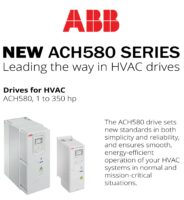
April 30, 2020 – Presented by: Ron Will of driSteem
Higher outdoor air ventilation rates, better filtration and surface cleaning in our buildings all reduce risk of disease transmission. Humidity matters too, because it has been proven that viruses that cause influenza and other flu-like illnesses survive best when the relative humidity (RH) is low.
Carefully controlled indoor humidity levels are a safe, easy and efficient way to reduce the spread of viruses that cause respiratory illnesses in our buildings and protect occupant health. The addition of humidity to an indoor space can render viruses inactive and less infectious in as little as 15 minutes.
For the healthiest buildings, the goal is to keep the relative humidity level in buildings between 40 and 60% RH to:
- Reduce the amount of viruses and bacteria in the air and on surfaces
- Protect our body’s built-in barriers to illness
- Assist the self-clearing mechanism of the airways in our respiratory system, which is our innate antiviral defense
- Ensure proper tissue repair function, especially in our lungs
In health care facilities, offices, factories, and other buildings, a smaller commercial humidification system can be quickly installed on the wall and start adding moisture right away to keep spaces at that optimal level of 40 to 60% RH. Larger humidification systems fit inside a facility’s HVAC system and can keep an entire building humidified.
Professional humidification systems offer precise control over the relative humidity in any indoor space. The small humidifiers found in stores can add humidity to a small area, but they don’t have the ability to measure and control their output of steam or vaporized air, running the danger of rooms that are too damp or too dry.
The best way to achieve to ensure that that moisture in indoor air stays between 40-60% RH is to use a humidification system that offers precise control to consistently keep our spaces within this range, so we all stay healthier.
SERVICE IS OUR TRADEMARK! | Mechanical sales Midwest Inc. | 913.815.3263




